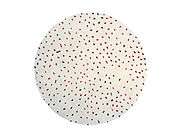Brucella: Difference between revisions
m (Bot: Automated text replacement (-{{SIB}} + & -{{EH}} + & -{{EJ}} + & -{{Editor Help}} + & -{{Editor Join}} +)) |
m (Robot: Automated text replacement (-{{WikiDoc Cardiology Network Infobox}} +, -<references /> +{{reflist|2}}, -{{reflist}} +{{reflist|2}})) |
||
| Line 40: | Line 40: | ||
==References== | ==References== | ||
{{reflist}} | {{reflist|2}} | ||
==External links== | ==External links== | ||
Revision as of 14:53, 4 September 2012
| Brucella | ||||||||||||
|---|---|---|---|---|---|---|---|---|---|---|---|---|
 | ||||||||||||
| Scientific classification | ||||||||||||
| ||||||||||||
| Species | ||||||||||||
|
B. abortus |
|
WikiDoc Resources for Brucella |
|
Articles |
|---|
|
Most recent articles on Brucella |
|
Media |
|
Evidence Based Medicine |
|
Clinical Trials |
|
Ongoing Trials on Brucella at Clinical Trials.gov Clinical Trials on Brucella at Google
|
|
Guidelines / Policies / Govt |
|
US National Guidelines Clearinghouse on Brucella
|
|
Books |
|
News |
|
Commentary |
|
Definitions |
|
Patient Resources / Community |
|
Directions to Hospitals Treating Brucella Risk calculators and risk factors for Brucella
|
|
Healthcare Provider Resources |
|
Causes & Risk Factors for Brucella |
|
Continuing Medical Education (CME) |
|
International |
|
|
|
Business |
|
Experimental / Informatics |
Overview
Brucella is a genus of Gram-negative bacteria.[1] They are small (0.5 to 0.7 by 0.6 to 1.5 µm), non-motile, encapsulated coccobacilli.
Brucella is the cause of brucellosis, a true zoonotic disease (i.e. human-to-human transmission has not been identified).[1] It is transmitted by ingesting infected food, direct contact with an infected animal, or inhalation of aerosols. Minimum infectious exposure is between 10 - 100 organisms. Brucellosis primarily occurs through occupational exposure (e.g. exposure to cattle, sheep, pigs), but also by consumption of unpasteurised milk products.
There are a few different species of Brucella, each with a slightly different presentation, such as B. melitensis, B. abortus, B. suis and B. citicosis.
Laboratory isolation
Brucella are slow-growing, but may be isolated from normal blood cultures using standard media. In traditional blood culture media, prolonged incubation (up to 6 weeks) may be required, but on modern automated machines the cultures often come positive within seven days. On Gram stain they appear as dense clumps of Gram-negative coccobacilli and are exceedingly difficult to see.
Laboratory acquired brucellosis is common.[2] This most often happens when the disease is not thought of until cultures become positive, by which time the specimens have already been handled by a number of laboratory staff. The idea of preventative treatment is to stop people who have been exposed to Brucella from becoming unwell with the disease.
There are no clinical trials to be relied on as a guide for optimal treatment, but a three week course of rifampicin and doxycycline twice daily is the combination most often used, and appears to be efficacious;[2][3] the advantage of this regimen is that it can be taken by mouth and there are no injections, however, a high rate of side effects (nausea, vomiting, loss of appetite) has also been reported.[3]
Blue light study
In a study published in Science magazine in August of 2007, it was revealed that Brucella reacts strongly to the presence of the blue spectrum in natural light, reproducing at a great rate and becoming infectious. Conversely, depriving Brucella of the blue wavelengths dropped its reproductive rate by 90%, a result one of the co-authors called "spectacular."[4][5]
References
- ↑ 1.0 1.1 Ryan KJ, Ray CG (editors) (2004). Sherris Medical Microbiology (4th ed. ed.). McGraw Hill. ISBN 0-8385-8529-9.
- ↑ 2.0 2.1 Robichaud S, Libman M, Behr M, Rubin E (2004). "Prevention of laboratory-acquired brucellosis". Clin. Infect. Dis. 38 (12): e119–22. doi:10.1086/421024. PMID 15227634.
- ↑ 3.0 3.1 Maley MW, Kociuba K, Chan RC (2006). "Prevention of laboratory-acquired brucellosis: significant side effects of prophylaxis". Clin. Infect. Dis. 42 (3): 433–4. doi:10.1086/499112. PMID 16392095.
- ↑ "Deadly in the Daylight" August 23, 2007 in ScienceNOW Daily News. Accessed September 8, 2007.
- ↑ [http://www.sciencemag.org/cgi/content/abstract/317/5841/1090 "Blue-Light-Activated Histidine Kinases: Two-Component Sensors in Bacteria "], August 24 2007, Science Vol. 317:5841, pp. 1090 - 1093 Accessed September 8, 2007.
External links